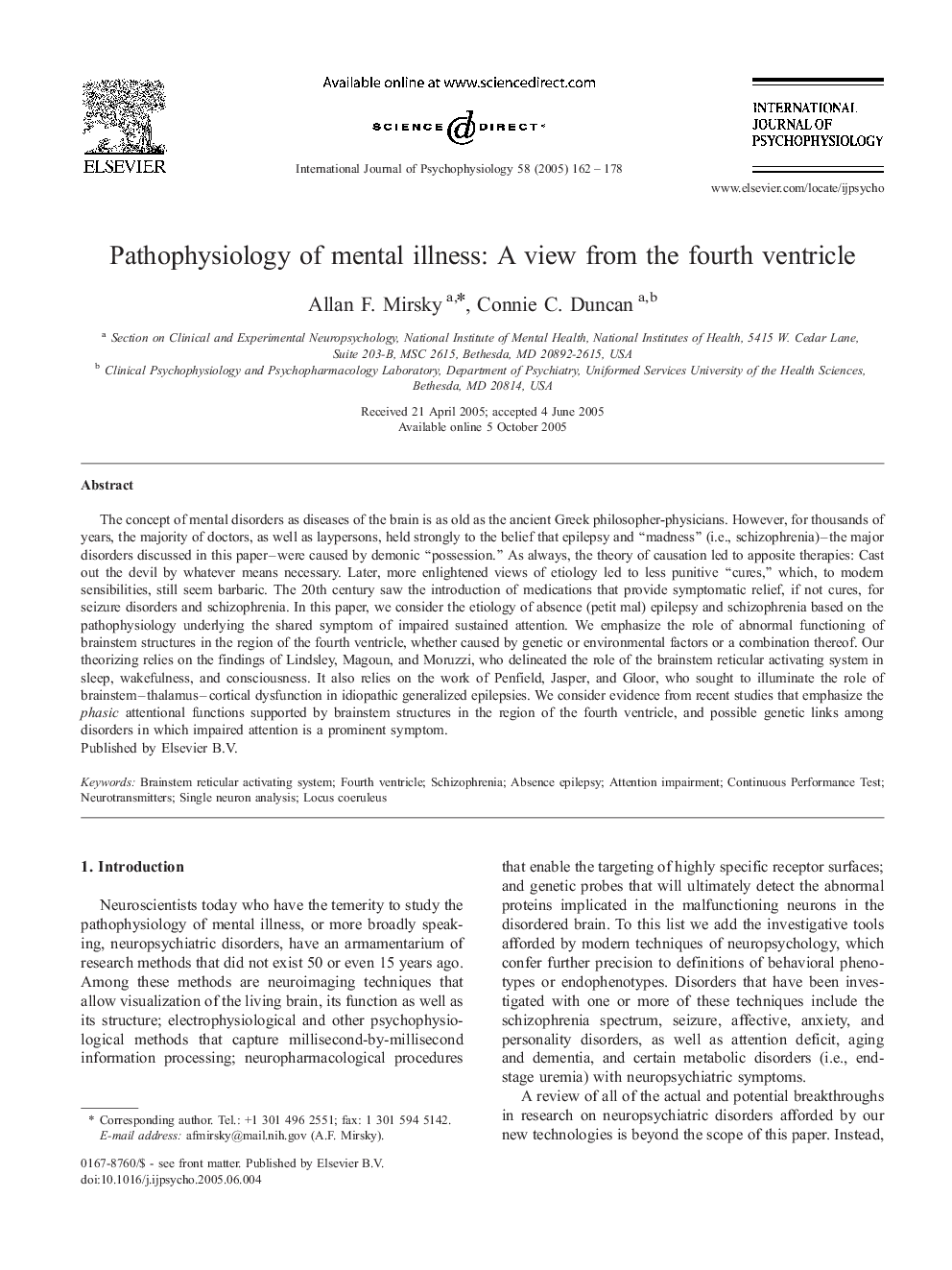| Article ID | Journal | Published Year | Pages | File Type |
|---|---|---|---|---|
| 9722581 | International Journal of Psychophysiology | 2005 | 17 Pages |
Abstract
The concept of mental disorders as diseases of the brain is as old as the ancient Greek philosopher-physicians. However, for thousands of years, the majority of doctors, as well as laypersons, held strongly to the belief that epilepsy and “madness” (i.e., schizophrenia)-the major disorders discussed in this paper-were caused by demonic “possession.” As always, the theory of causation led to apposite therapies: Cast out the devil by whatever means necessary. Later, more enlightened views of etiology led to less punitive “cures,” which, to modern sensibilities, still seem barbaric. The 20th century saw the introduction of medications that provide symptomatic relief, if not cures, for seizure disorders and schizophrenia. In this paper, we consider the etiology of absence (petit mal) epilepsy and schizophrenia based on the pathophysiology underlying the shared symptom of impaired sustained attention. We emphasize the role of abnormal functioning of brainstem structures in the region of the fourth ventricle, whether caused by genetic or environmental factors or a combination thereof. Our theorizing relies on the findings of Lindsley, Magoun, and Moruzzi, who delineated the role of the brainstem reticular activating system in sleep, wakefulness, and consciousness. It also relies on the work of Penfield, Jasper, and Gloor, who sought to illuminate the role of brainstem-thalamus-cortical dysfunction in idiopathic generalized epilepsies. We consider evidence from recent studies that emphasize the phasic attentional functions supported by brainstem structures in the region of the fourth ventricle, and possible genetic links among disorders in which impaired attention is a prominent symptom.
Keywords
Related Topics
Life Sciences
Neuroscience
Behavioral Neuroscience
Authors
Allan F. Mirsky, Connie C. Duncan,
